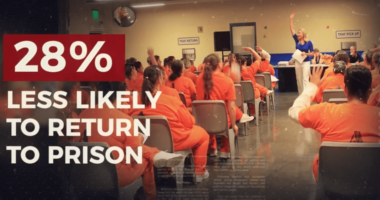7 Key Takeaways on Degree Attainment for Black Adults
The individual benefits of earning a college degree are well known, but the larger social benefits that are associated with a better educated population are often overlooked. Generally, people with higher incomes contribute more to federal, state, and local tax revenues, which provide more money for schools, colleges, public transit and infrastructure, the military, parks and recreation, and other public services. Additionally, when residents have higher levels of education, they are much less likely to rely on social safety net programs and are more likely to volunteer, donate money, and be civically engaged.
That’s why more than 40 states over the past decade have adopted some sort of degree attainment goal — that is, increasing the state’s share of residents who have postsecondary degrees. Degree attainment can be better by improving education at the elementary, secondary, and postsecondary levels, but degree attainment is also a byproduct of each state’s economic market and broader social conditions. People tend to move to areas where there are employment opportunities or family ties, and places where they feel comfortable or happy living and raising their children.
Since degree attainment is influenced by educational, economic, and other social factors, it is clear that a comprehensive publicly policy agenda is needed to ensure improvements benefit all citizens and not just a few. And as our nation becomes increasingly more racially and ethnically diverse, justice and equity for people of color must be a core consideration for policymakers looking to enact public policies that lead to change. For example, many states — especially those in the South — will have a difficult time meeting their degree attainment goals if the gaps in degree attainment that exist between Black and White adults are not closed.
With this in mind, The Education Trust has released a brief on degree attainment for Black adults at both the national and state level. In this brief, we highlighted the current degree attainment rates and gains in degree attainment since 2000. Below are seven key takeaways from our brief. We delve into some state data below, but if you want to find out how your particular state is doing on Black degree attainment, check out our Ed Watch interactive data tool.
- Nationally, Black degree attainment is slightly lower than 31 percent and trails White degree attainment by 16.3 percentage points.
- Currently, Black degree attainment is lower than White degree attainment was in 1990 — over 25 years ago.
- There has been very little intergenerational improvement in degree attainment among Black adults. Only 30.2 percent of younger Black adults (25-34) have earned a degree compared to 27 percent of older Black adults (55-64). Degree attainment among younger White adults is nearly 10 percentage points higher than it is for older White adults.
- Black attainment did not exceed White attainment in any of the 41 states we examined, and degree attainment gaps exceeded 10 percentage points in 38 of the 41 states. Twenty-one states had gaps above 15 percentage points. (Note: We did not included nine states in our analysis because they had fewer than 15,000 Black adults).
- Black attainment has grown since 2000, but not at a pace needed to close the attainment gap between Black and White adults at the national level. In only nine states has the gap between Black and White adults closed by more than 1 percentage point since 2000.
- Top performing states for Black degree attainment: Georgia, Maryland, Nebraska, New Mexico, and Virginia. These states have the highest degree attainment levels for Black adults and have seen the largest gains since 2000.
- Bottom performing states for Black degree attainment: Louisiana, Michigan, Missouri, Nevada, Oklahoma, and Wisconsin. These states have the lowest degree attainment levels for Black adults and have seen the smallest gains since 2000.











